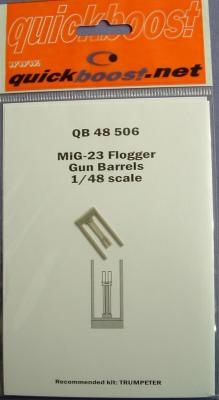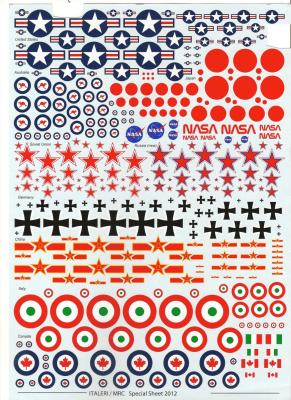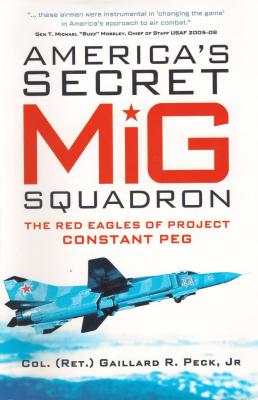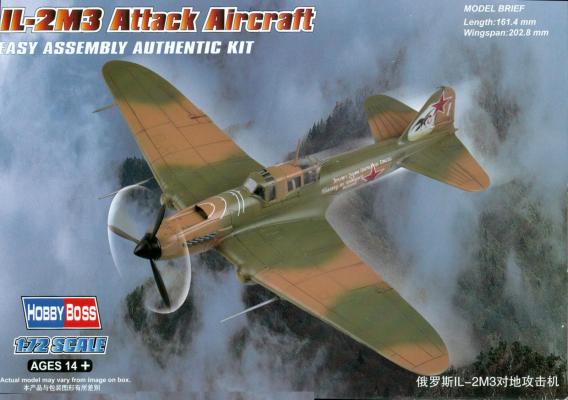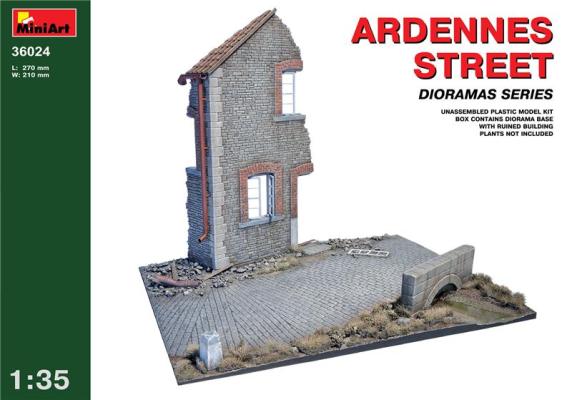Prominent on the underside of the Mig-23 is the twin GSH-23 twin barrel 23mm cannon which can be used air to air or air to ground. The Trumpeter 1/48 Mig-23M and Mig-23MF kits provide multiple parts to create the cannon – the L34 for the fairing, PE parts 2 and 3 for the shell ejection chutes and part C2 which consists of the twin cannon barrel. Once covered by the fairing, the only portion of the GSH-23 are the muzzles of thee barrels with their distinctive finned shaped. This offering by Quickboost is a one for one drop in replacement for kit part C2, providing a more accurate pair of muzzles that are physically separated, unlike the kit part which has the muzzles connected. My guess is that the kit muzzles are that way for easy of injection molding. The resin replacement is not only separate provides smaller more realistically sized gun bores.
Welcome to the IPMS/USA Reviews site!
Introduction: The primary organization of the IPMS/USA Review website is by IPMS/USA National Contest Class. Within each Class there are sub-menus by kits, decals, books, etc. The Miscellaneous Class is for items that are not class specific or that cross two or more classes.
IPMS/USA Members: We encourage you to submit reviews, both here and to the Journal. To volunteer for membership in the IPMS/USA "Reviewers Corps" and submit your own reviews, please read the Guidelines For Submitting Product Reviews.
Manufacturers, publishers, and other industry members: IPMS/USA is pleased to offer your company the opportunity for product reviews. All product reviews are performed by IPMS/USA members, and are posted in the publicly-accessible section of our website. With very few exceptions, we perform full build reviews of new kit releases, aftermarket products, and supplies. If you would care to provide product samples for review, please contact John Noack, IPMS/USA 1st VP.
To learn more about IPMS/USA, please see our About Us page.
At the 2012 Orlando IPMS Nationals, Model Rectifier Corporation made a special decal sheet of multi-nationals roundel insignia available for giveaway at their show booth. I was lucky enough to receive one of those sheets from the IPMS Reviewer Corps.
This sheet contains national markings for USA modern aircraft (color stars & bars), Japan, Australia, Russia, Soviet Union, Germany, China, Italy and Canada, in various sizes and scales from relatively large to tiny.
I built an old Starfix 1/72 T-38 for my father’s career aircraft collection, and the decals were unusable. I found some USAF lettering in my spares box, but used the stars and bars from this sheet. They went down smoothly, and with a touch of Solvaset, nestled down into the re-scribed surface detailing I applied. They made a mediocre kit look good. I will keep this sheet on hand to use in similar situations.
One of the planned builds in my stash is the Mig-21 F-13 the USAF obtained from the Israelis that became the secret “Have Doughnut” project. I discovered this aircraft in an article in an old Air Force Association Magazine my Dad gave me. The photos of the ungainly looking natural metal beast with stars and bars markings were intriguing. When I saw this book offered up on the review list, I asked for it thinking it would contain all the reference photos I needed to supplement those in the magazine to complete that build. I was wrong. There were few photos of the aircraft in the book.
What I did find, though, was the fascinating story of the creation of one of our country’s greatest defense assets over the past few decades. Author, and former F-4 Phantom driver Gail Peck (Col., USAF, ret’d.) details the story of the USAF’s aggressor training squadron from inception to its’ current status as the opposing force team for the best trained pilots in the world.
The Ilyushin Il-2 Sturmovik is perhaps one of the most famous aircraft of World War II, especially since more IL-2’s were produced, 36,163, than any other military combat aircraft of this era. Appearing in numerous versions, including single and two seaters, the IL-2 was probably the best close support and anti-tank aircraft used during the war. Any serious modeler should be aware of this plane’s history, so I won’t repeat it here. The model presents a rather unusual variant, the one with 37 mm. NS-37 cannons mounted in streamlined fairings underneath each wing. Flying characteristics suffered, caused by the CG shift rearward because of the cannon installations, but the aircraft was available in adequate numbers for the Kursk Battles, resulting in the destruction of many German tanks and other vehicles. Shortages of cannons kept production numbers small, and previous variants with the Way-23 mm. wing mounted cannons were by far the most common types.
This review is for the 1/35 MiniArt Ardennes Street, which is a road section with a damaged building and a small culvert.
As with most of these MiniArt kits you get extras, and these are worth it too. There is a full door, some window panes and some window shutters plus a rail fence. The culvert is really neat too, and I plan to dress mine up with a small piece of pipe, and some trickling water.
The building is not difficult to build, but it does need some reinforcement in the form of styrene stripes. As you can see in the photo, it helps the building stay together, and it provides a place for the putty later on. I have built three of these MiniArt 1/35 buildings, and while I do like them my main pet peeve is that they don’t have much surface for glue to grab onto. However, as you can see from my previous two reviews, once the putty work is done and once they are painted they do look nice.











